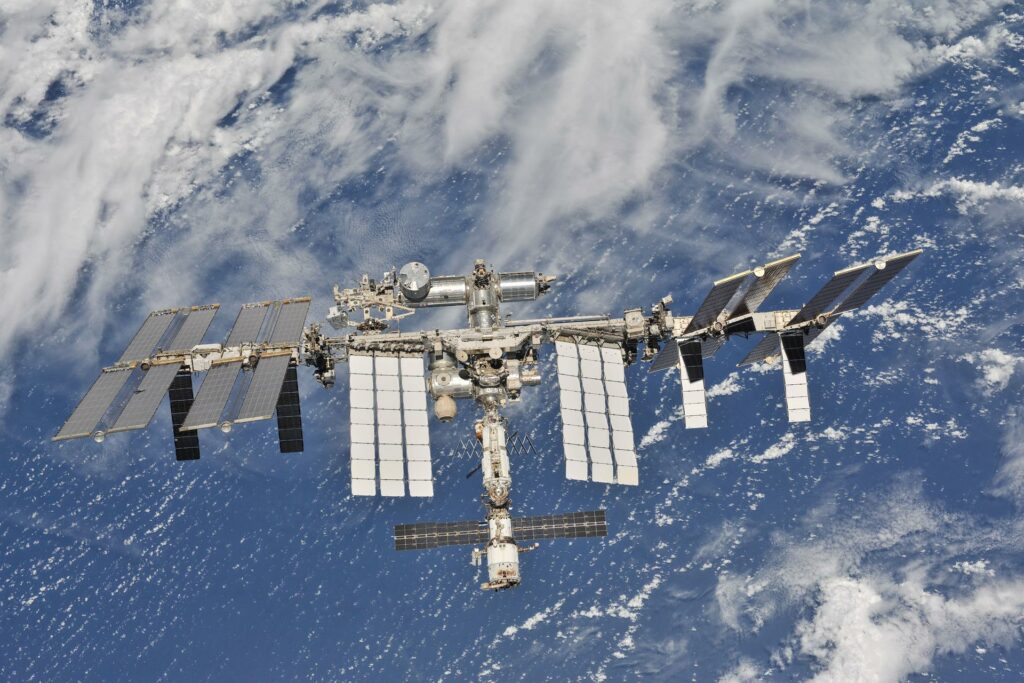
Amateur Radio on the International Space Station (ARISS) has received schedule confirmation for an ARISS radio contact between an astronaut aboard the International Space Station (ISS) and students from New England Sci-Tech located in Natick, MA. ARISS conducts 60-80 of these special amateur radio contacts each year between students around the globe and crew members with ham radio licenses aboard the ISS. The BIG E („New England’s Great State Fair“) is hosting this ARISS contact during the annual state fair event, to be held in their large performance arena with seating for over 5,000 people.
New England Sci-Tech is a non-profit STEM and education center and makerspace dedicated to project-based, hands-on learning for youth and families across the New England community. The institution provides STEM education for youth through adult ages, both in-person and remote learning. The science-technology facility has a fully equipped ham radio lab, space science lab, maker space with a battling bots arena, 2D/3D design lab, woodworking shop, and a 5-meter- sized planetarium. Located on one of the highest hills in Natick, Massachusetts, the facility is ideally suited for amateur radio as well as astronomy. With a solar telescope and several large night scopes the school offers free public observing sessions to watch the sun, stars, moon, planets, and overhead passes of satellites and the International Space Station.
To support this ARISS contact, New England Sci-Tech staff developed a 12-month program that provided students hands-on experience in model rocketry, astronomy, electronics, coding, mathematics, and, of course, amateur radio. Guidance on amateur radio-related activities and course curriculum has been provided by Fred Kemmerer (AB1OC) (ARRL New England Division Director and ARISS Mentor), long-time instructor on amateur radio and satellite communications topics. Hands on instruction has been provided by members of the Sci-Tech Amateur Radio Society (STARS) (W1STR).
This will be a telebridge Contact via Amateur Radio allowing students to ask their questions of Astronaut Bob Hines, amateur radio call sign KI5RQT. Local Covid-19 protocols are adhered to as applicable for each ARISS contact. The downlink frequency for this contact is 145.800 MHz and may be heard by listeners that are within the ISS-footprint that also encompasses the telebridge station.
The ARISS amateur radio ground station (telebridge station) for this contact is in Aartselaar, Belgium. The amateur radio volunteer team at the ground station will use the callsign ON4ISS, to establish and maintain the ISS connection. The ARISS radio contact is scheduled for September 27, 2022 at 2:30 pm EDT (West Springfield, MA) (18:30:39 UTC, 1:30 pm CDT, 12:30 pm MDT, 11:30 am PDT). Special programming prior to initiating the radio contact will begin at 1:20 pm EDT.
The public is invited to watch the live stream at: https://www.youtube.com/watch?v=hdxnD8uF8t0
As time allows, students will ask these questions:
1. Have you used any AI Robots to help you on the space station?
2. How would you feel, if we find signs of life on another planet?
3. What happens if an astronaut gets sick in space?
4. How do all the modules from different countries interconnect without causing software or hardware incompatibilities?
5. What exercise method do you find most useful to ward off muscle atrophy?
6. Have you experienced light flashes or „Astronauts Eye“?
7. It is my absolute dream to be sitting in the same position you are. If you could give me just one piece of advice what would it be?
8. Have you ever been on the ISS when it was impacted by an object in space such as a micrometeorite?
9. Do you ever feel pain because of the way microgravity affects your muscles?
10. Did you find the astronaut training program was mentally or physically strenuous or stressful?
11. How does seeing the earth from a different perspective change the way you think about life?
12. What advice would you give to children who wish to someday become an astronaut?
13. If extravehicular activity didn’t require so much preparation beforehand, would you do it more often?
14. What was the most amazing thing you saw your first time in space?
15. Have you used amateur radio on the ISS besides making ARISS contacts with school kids on Earth?
16. Do you sleep better in space or on Earth?
17. Do you normally rely on computers or human skill for spaceship docking at the ISS?
18. What are some memorable mascots that have been brought up to the ISS?
19. What unusual weather on Earth have you seen from space?
20. What class or extracurricular activity inspired you the most to become an astronaut?
Quelle:
Dave Jordan, AA4KN
ARISS PR